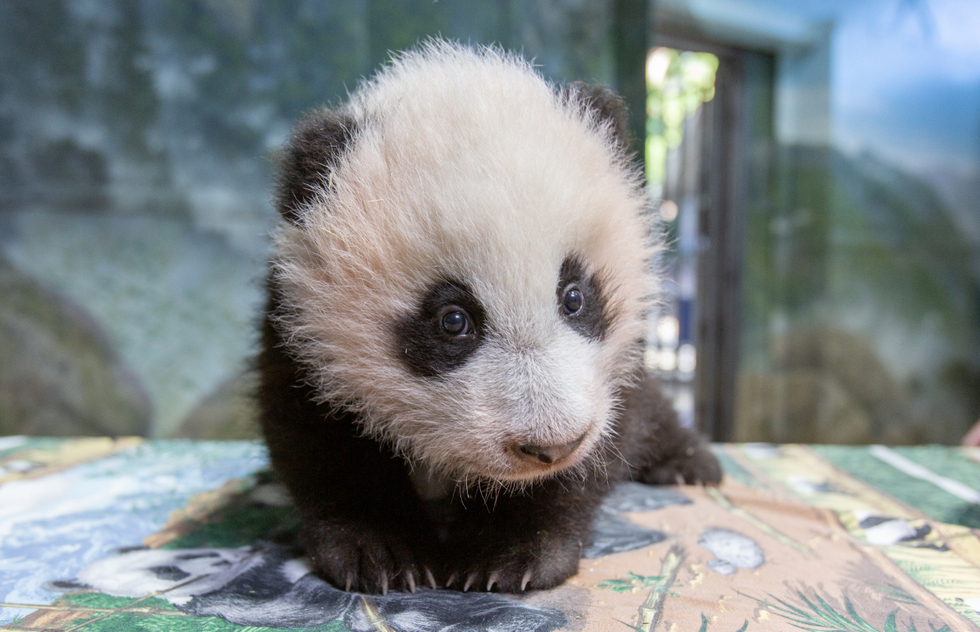The National Zoo was created by an act of Congress in 1889 and became part of the Smithsonian Institution in 1890. A leader in the care, breeding, and exhibition of animals, the zoo occupies 163 lushly landscaped and wooded acres and is one of the country’s most delightful zoos. In all, the park is home to about 390 species—some 2,700 animals, many of them rare and/or endangered. You’ll see cheetahs, zebras, gorillas, elephants, monkeys, brown pelicans, orangutans, bison, and, of course, lions, tigers, and bears. The zoo’s biggest draw continues to be its giant pandas, Mei Xiang, Tian Tian, and their cub, Xiao Qi Ji, who was born in August 2020.
Enter the zoo at the Connecticut Avenue entrance; you’ll be right by the Education Building, where you can pick up a map and find out about feeding times and any special activities. Note: From this main entrance, you’re headed downhill; the return uphill walk can prove trying if you have young children and/or it’s a hot day. Unfortunately, waiting for families at the bottom of the hill is the Kids’ Farm with ducks, chickens, goats, cows, and miniature donkeys, plus a vegetable garden and pizza sculpture. Let’s face it: You might not get that far. But just in case, keep in mind that the zoo rents strollers, and that snack bars and ice-cream kiosks are scattered throughout the park.
The zoo animals live in large, open enclosures—simulations of their natural habitats—along easy-to-follow paths. The Olmsted Walk winds from the zoo’s Connecticut Avenue entrance all the way to the zoo’s end, at Rock Creek Park. Stemming off the central Olmsted Walk is the Asia Trail, which takes you past sloth bears, those frolicking giant pandas, fishing cats, clouded leopards, and small-clawed otters. You can’t get lost, and it’s hard to miss a thing.
Across from the giant panda yard is Elephant Trails, the zoo’s high-tech, environmentally friendly habitat for its five Asian elephants. The enclosure includes 4 acres of indoor and outdoor space, a wading pool, a walking path for exercise, a barn with soft flooring for sleeping and geothermal heating, and a community center that offers the elephants the chance to socialize!
Moving on from there takes you to the American Trail. Located dead center in the zoo, the American Trail is home to animals native to the United States and Canada that were once in danger of becoming extinct. Bald eagles, ravens, seals, sea lions, gray wolves, beavers, and river otters are among the creatures living here.
I also recommend Amazonia, where you can hang out and observe enormous 7-foot-long arapaima fish and itty-bitty red-tailed catfish, and look for monkeys hiding in the 50-foot-tall trees.
Not far from the Amazonia exhibit, stationed in front of the Great Cats habitat, home to lions, tigers, lynxes, and the like, is the zoo’s solar-powered carousel, whose canopy is carved with 58 species of animals. Rides are $3.50. (But zoo admission is free.)
The zoo offers many dining options, stroller rental stations, gift shops, and several paid-parking lots, which you’ll need to reserve and pay for in advance.
Important: While entry to the zoo is free, all visitors must now register for entry passes in advance—even kids and babies must be registered. You can reserve up to six tickets at once; they’re good for the whole day so you don’t need to specify an arrival time. It’s good to book ahead, though I’ve had luck finding same-day spaces online.






 About our rating system
About our rating system


